
From Partition To Nakbah, Memories Of Home
Published by: Outlook Magazine
New Delhi, India, 2023
Language: English
Israel/ Memories
—Words inscribed on the tombstone of Emile Touma (1919-1985)
In this conversation with Sophie Ernst, a visual artist who explores architecture in relation to memory and cultural relativity in works that mix video projection and sculptural installation, Haya, who was also a prominent artist, talks about the childhood home of her husband Emile in Haifa. Unfortunately, Haya passed away in 2009, soon after their meeting.
These are edited excerpts from that conversation where Haya talks about home, memories, belonging, displacement and identity…
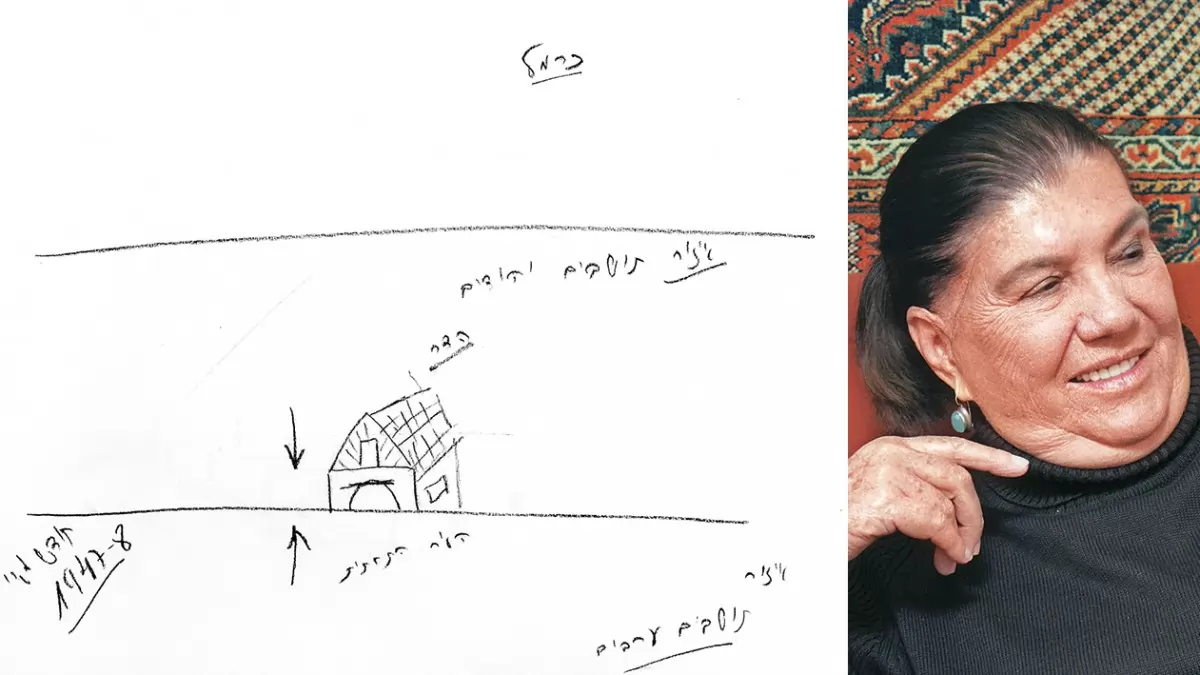
The Sophie Ernst-Haya Touma interview
Published by: Outlook Magazine
New Delhi, India, 2023
Language: English
Apology and ‚Eingedenken‘
Some suggest an apology amounts to a free ticket to forget; I believe, however, that it can embody Eingedenken—a generative act of remembering the past in its present-day relevance.
During the first LOSS workshop (22 September 2018, University of Westminster), I discussed a public intervention in Wakefield, The Silent Empress (2012). In my talk, I shared what inspired its creation and argued that the work exemplifies Eingedenken by actively engaging with history to illuminate contemporary concerns. We frequently returned to the idea of apology, noting how it is often insincere, commodified, or otherwise flawed. Here, I reiterate my insights on The Silent Empress and expand on the concept of apology, advocating a deeper, more ethically charged engagement with the past.
Apology and 'Eingedenken'
Publisher: Stuart Hall Foundation
London, United Kingdom, 2019
Language: English
PDF
Graphical conversations of HOME: Performing Landscape
This paper treats landscape as a dynamic, performative process, focusing on drawing, mapping, and storytelling as methods of inquiry. Using the HOME project as a case study, it examines how images of landscape both reveal and construct power relationships. In this project, artists, architects, and writers from Pakistan, India, Israel, and Palestine map and sketch the places they once called home, emphasising their ties to memory rather than the landscape’s aesthetic qualities. By investigating how recollections of specific topographies inform identity and political claims, I propose that drawing functions as a “graphical conversation” with history.
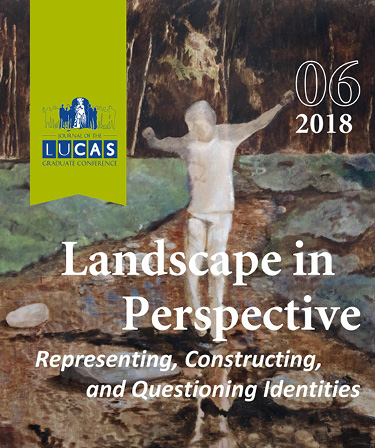
Journal of the LUCAS Graduate Conference
ISSN: 2214-191x
Publisher: Leiden University Library
Leiden, The Netherlands, 2018
Language: English
download pdf
Polemical Position - Idealized Enclosures: Three Spatial Possibilities Around the Idea of the Exhibition
There are things we know about the idea of the exhibition, and things that remain uncertain. We know, for instance, that the modern exhibition evolved from the French salon—a space traditionally portrayed as one for gathering, viewing, and discussing art. Marcel Proust described the salon as part of the public sphere, shaped by ideological forces and social stratification. Yet, we may not fully understand why this salon culture has endured despite substantial technological and ideological shifts.
My practice frequently engages with notions of ideal spaces. Here, I examine the exhibition through a spatial lens, asking: What defines exhibition space? Which spatial characteristics do exhibitions share, and what ideals do they represent or project? The following explores three spatial possibilities underpinning the concept of the exhibition.
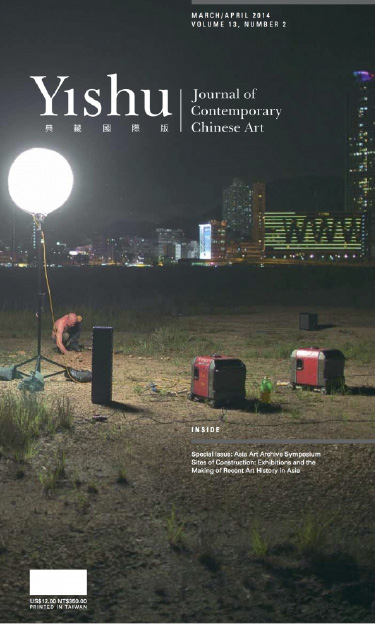
Yishu, Journal of Conteporary Chinese Art
Volume 13, number 2, March/April 2014
ISSN: 1683-3082
Publisher: Art & Collection Group
Taipei, Taiwan, 2014
Language: English
OEVRE: Sophie Ernst
TAKE OEVRE brings together a spectrum of artists reflecting their artistic practice. Dayanita Singh, Jitish Kallat, Iftikhar and Elizabeth Dadi, Ranbir Kaleka, Rashi Kaleka, Ritas Kou, Thukral & Tagra, Pooja Iranni, Yamini Nayar, Pors & Rao, Sarnath Banerjee, Raqs Media Collective, T.V. Santhosh and Subodh Gupta have contributed pages in which they open their sketchbooks, offer a glimpse at traces of thoughts that come during the course of the process of creating an artwork ...
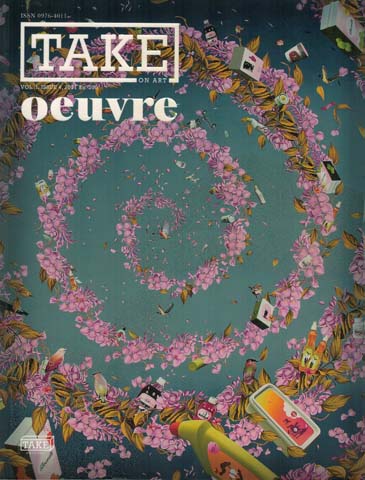
Take on Art
Vol. 1, Issue 4, 2011
ISSN: 0976-4011
Guest Editor: Sophie Ernst
Publisher: Take on art Publishing
New Delhi, India, 2011
Language: English
Konfiguration des Raums
Ist Kunst politisch? Ist meine Kunst politisch? Was ist eigentlich 'politische Kunst'? Aktivismus? Gesellschaftskritik? Oder sogar sozialer Realismus? Propaganda? Utopie? Diese Fragen zur Beziehung zwischen Kunst und Politik, und wie sich das in meiner Arbeit widerspiegelt, beschäftigen mich im folgenden Text.
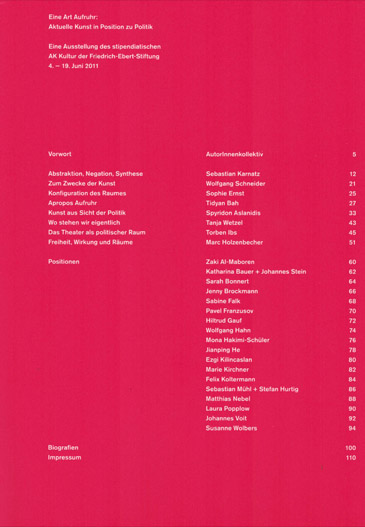
Eine Art Aufruhr: Aktuelle Kunst in Position zu Politik
Exhibition Catalogue
Publisher: Friedrich-Ebert-Stiftung
Bonn, Germany, 2011
Language: German
download pdf
